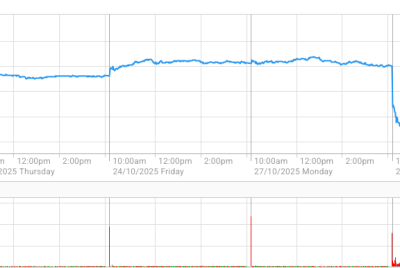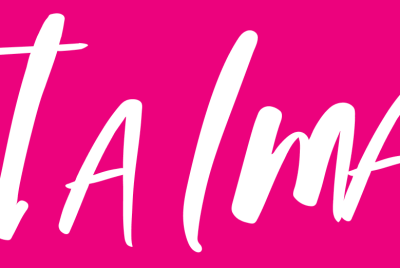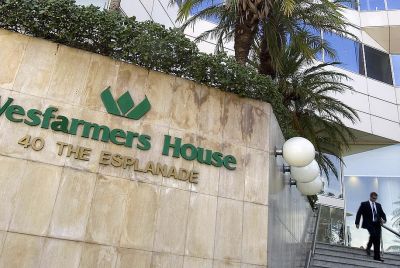NAB Just Posted $7.1 Billion Profit — But Here's Why Investors Should Be Worried

WHAT YOU NEED TO KNOW:
The Results: NAB reported FY25 cash earnings of $7.091 billion (down 0.2%) and statutory net profit of $6.759 billion (down 2.9%), both missing analyst expectations. The bank declared a final dividend of 85 cents per share.
The Valuation Problem: NAB shares are trading at 2.1 times book value—a 38% premium to the 10-year average of 1.5x and the most expensive valuation in over a decade. During stress periods, the ratio dropped as low as 0.8x.
Rising Bad Debts: Credit impairment charges jumped 14.4%, primarily from individually assessed charges in the business lending portfolio. While unemployment remains low, cracks are appearing in credit quality.
Margin Pressure: Net interest margin rose 3 basis points to 1.74% overall, but excluding treasury benefits and lower liquid assets, the margin actually declined 1 basis point—reflecting higher deposit costs and wholesale funding costs.
Losing Market Share: Rivals have taken about $5 billion in business loans from NAB over the past year. Home lending through proprietary channels improved to 41% (from 38%), but NAB remains the weakest of the big four in mortgage market share.
Australia's Most Expensive Bank Stock Just Delivered... Flat Earnings
When you're trading at your highest valuation in more than a decade, investors expect stellar results to justify the premium.
What they got instead was a reality check.
National Australia Bank posted essentially flat cash earnings on Thursday—$7.091 billion compared to $7.102 billion last year, a decline of 0.2%. Statutory net profit fell 2.9% to $6.759 billion.
Both figures came in below analyst expectations. UBS had forecast $7.17 billion in cash profit. The actual result: $7.09 billion.
Here's the problem: NAB shares are currently priced at around 2.1 times book value—a hefty 38% premium to the bank's 10-year average of 1.5 times, and the most expensive valuation NAB has commanded in over a decade.
"That's quite a price tag for a business facing margin pressure from expected rate cuts and intense competition in home lending," notes Stocks Down Under analyst commentary.
The market is essentially pricing in perfection: modest credit growth, stable margins, and low bad debts. Thursday's results showed none of those assumptions are guaranteed.
The Bad Debt Warning Sign
Perhaps the most concerning figure buried in the results: credit impairment charges climbed 14.4%, primarily due to higher individually assessed charges within NAB's business lending portfolio.
Translation: More business customers are struggling to repay loans, and NAB is setting aside more money to cover potential defaults.
CEO Andrew Irvine tried to put a positive spin on it, noting that "a number of key asset quality outcomes improved over the six months to 30 September, consistent with a supportive Australian economic environment."
But here's the reality: if bad debts are rising even with unemployment at 4.1% and a "supportive" economic environment, what happens when conditions deteriorate?
Australia's economy faces significant headwinds:
- Cost-of-living pressures squeezing household budgets
- Commercial property weakness
- Potential rate cuts that could signal economic weakness
- Slowing business investment
NAB is Australia's biggest business lender. When businesses start struggling, NAB feels it first.
The Margin Squeeze Nobody's Talking About
NAB reported net interest margin (NIM) of 1.74%, up 3 basis points from 1.71% last year.
Sounds good, right?
Look closer. Excluding benefits from the markets and treasury division and lower liquid assets, the margin actually declined by 1 basis point—reflecting higher deposit costs, unfavorable deposit mix, and higher wholesale funding costs.
This is the real problem facing Australian banks: competition for deposits has intensified dramatically. Banks are paying more to attract and retain customer deposits, squeezing profitability.
UBS analyst John Storey raised questions about the sustainability of the margin beat, noting it was "driven by replicating portfolio benefits"—financial engineering rather than underlying business strength.
With the Reserve Bank expected to cut rates in 2026, margin pressure will only intensify. Rate cuts typically hurt banks because deposit rates fall faster than lending rates can be increased, compressing the spread.
The Valuation That Doesn't Make Sense
Let's talk about why NAB's current share price might be living in fantasy land.
Historical context:
- 10-year median price-to-book: 1.5x
- Current price-to-book: 2.1x (38% premium)
- During stress periods: as low as 0.8x
NAB shares have risen 13% over the past 12 months, outperforming the ASX 200's 8% gain.
But here's the kicker: much of those share price gains came from valuation expansion, not earnings growth. Earnings are essentially flat, yet the stock is up double digits.
This is what happens in late-cycle markets—investors chase performance and bid up valuations beyond what fundamentals support, assuming the good times will continue.
"The market appears to be pricing in a relatively benign outlook: modest credit growth, stable margins, and low bad debts," observes Stocks Down Under. "That's a lot to get right, especially with rate cuts on the horizon that could squeeze profitability."
Losing Ground in Mortgages
While NAB emphasizes its strength in business banking, it's been losing ground in the crucial home lending market.
The bank improved proprietary home lending drawdowns to 41% in FY25 from 38% in FY24—but that still lags Commonwealth Bank (which dominates mortgage lending) and even ANZ.
Worse, rivals have taken about $5 billion in business loans over the past year. If that trend continues, NAB could miss out on future growth in both housing credit and its core business lending franchise.
Why does this matter? Mortgages are the bread and butter of Australian banking. They're low-risk, long-duration assets that generate steady income. Losing mortgage market share means losing the most stable part of the business.
The Numbers That Actually Matter
Let's break down what NAB actually delivered:
FY25 Cash Earnings: $7.091 billion (down 0.2% YoY)
- Below UBS forecast of $7.17 billion
- Below Visible Alpha consensus of $7.168 billion
Statutory Net Profit:$6.759 billion (down 2.9% YoY)
Earnings Per Share (Cash): 114 cents
- Aligned with consensus of 113 cents
- But statutory EPS of 221 cents was down 3.6% and behind consensus of 233.9 cents
Net Interest Margin:1.74% (up 3 basis points)
- But down 1 basis point excluding treasury benefits
- Below UBS estimate of 1.76%
CET1 Ratio:11.7%
- Below UBS estimate of 12.2%
- Below consensus of 11.8%
- Leaves NAB with "limited flexibility relative to its target range"
Final Dividend:85 cents per share (unchanged from last year)
- Total annual dividend: $1.70 per share (232 cents including interim)
- Fully franked at 30% tax rate
- Payable December 12, 2025
The One Bright Spot: Deposits
If there's a silver lining, it's deposit growth.
NAB's deposit balances rose 7% over FY25, with new business and retail transaction account openings increasing 16% across Business & Private Banking and Personal Banking.
This is crucial because deposits are the cheapest source of funding for banks. The more customer deposits NAB can attract, the less it needs to rely on expensive wholesale funding.
CEO Andrew Irvine highlighted this achievement: "Deposit balances rose 7% over FY25 and new business and retail transaction account openings across Business and Private Banking (B&PB) and Personal Banking (PB) increased 16%."
Australian business lending balances also rose 9%, demonstrating NAB's continued strength in its core business banking franchise.
But deposit growth only matters if you can lend profitably. With margins under pressure and bad debts rising, the profitability equation is getting tougher.
What CEO Andrew Irvine Says
In his typically optimistic CEO fashion, Andrew Irvine described the results as showing "good momentum," particularly in the second half.
"We are making good progress on our key priorities of growing business banking, driving deposit growth and strengthening proprietary home lending," Irvine said.
He pointed to targeted investments in "front line bankers and technology-enabled solutions delivering simpler, faster and safer outcomes."
Fair points. But none of that changes the fundamental reality: earnings are flat, bad debts are rising, margins are under pressure, and the stock trades at a premium valuation that assumes none of these problems will worsen.
The Big Picture: Australian Banks at a Crossroads
NAB's results reflect broader challenges facing Australian banks:
1. Peak Profitability: The combination of high interest rates + low bad debts + strong margins appears to be ending. All three are moving in the wrong direction.
2. Competition Intensifies: Digital banks, buy-now-pay-later providers, and fintech companies are eating away at traditional banking revenue streams.
3. Rate Cut Pressure: The RBA has held the cash rate at 3.6% but rate cuts are expected in 2026. Lower rates = compressed margins.
4. Economic Uncertainty: Household debt is at record levels, commercial property faces headwinds, and business investment is slowing.
5. Regulatory Pressure: Banks face increasing scrutiny over fees, customer treatment, and competition practices.
NAB isn't unique in facing these challenges—all Australian banks do. But NAB's premium valuation means it has further to fall if results disappoint.
What UBS Says: "Largely in Line"
UBS analyst John Storey described NAB's results as "largely in line" with expectations, despite the misses on several key metrics.
But "largely in line" isn't what you want to hear when your stock trades at a 38% premium to historical averages.
Storey highlighted positives including strong personal banking performance (deposits and pricing drove 26% increase vs. previous half) and 2.4% revenue growth to $10.5 billion.
But he raised questions about sustainability of the margin beat and noted the CET1 ratio came in below expectations, "leaving NAB with limited flexibility relative to its target range."
Translation: NAB doesn't have much room for error. If conditions worsen, the bank can't simply absorb the hit—it would need to cut dividends or raise capital.
The Risks Nobody Wants to Talk About
Here's what could go wrong from here:
Scenario 1: Faster Rate Cuts If the RBA cuts more aggressively than expected, margins compress faster, profitability falls, and the stock de-rates.
Scenario 2: Rising Unemployment If unemployment rises from 4.1% to 5%+, bad debts spike, requiring larger provisions that hit profits.
Scenario 3: Housing Market Correction If house prices fall 10-15%, mortgage customers face negative equity, defaults rise, and NAB's largest lending portfolio takes losses.
Scenario 4: Intensifying Competition If mortgage competition heats up further, NAB loses more market share and must choose between profitability and growth.
Scenario 5: Valuation Reversion If NAB's P/B ratio reverts from 2.1x to the 10-year average of 1.5x, the share price could fall 29% even if earnings stay flat.
That last one is the real kicker. NAB doesn't need earnings to collapse for the stock to fall significantly—it just needs the valuation premium to disappear.
The Bottom Line for Investors
NAB delivered exactly what analysts expected: flat earnings, slightly higher dividends, and a steady-as-she-goes outlook.
But "steady-as-she-goes" doesn't justify a premium valuation. It justifies an average valuation—or below average given the headwinds.
At 2.1 times book value, NAB's share price is pricing in:
- Continued earnings growth (not happening)
- Stable margins (declining excluding treasury effects)
- Low bad debts (rising 14.4%)
- Market share gains (losing ground in mortgages)
For income investors, the 85 cent final dividend ($1.70 annual) offers decent yield compared to term deposits. The dividend appears safe for now with an 11.7% CET1 ratio.
But for growth investors or anyone buying NAB today, the question is simple: what are you paying for?
You're paying a 38% premium to historical averages for flat earnings, rising bad debts, compressed margins, and uncertain prospects.
That's a bet that everything goes right from here. Based on Thursday's results, it's not a bet many rational investors would take.
As one analyst put it: "Since NAB is trading at a high valuation, any slip in performance or weaker forecasts could cause its share price to drop."
Thursday's results were that slip. The question now is whether investors will finally wake up to the valuation disconnect—or keep bidding up the stock in hopes the music doesn't stop.
© Copyright 2025 IBTimes AU. All rights reserved.





















